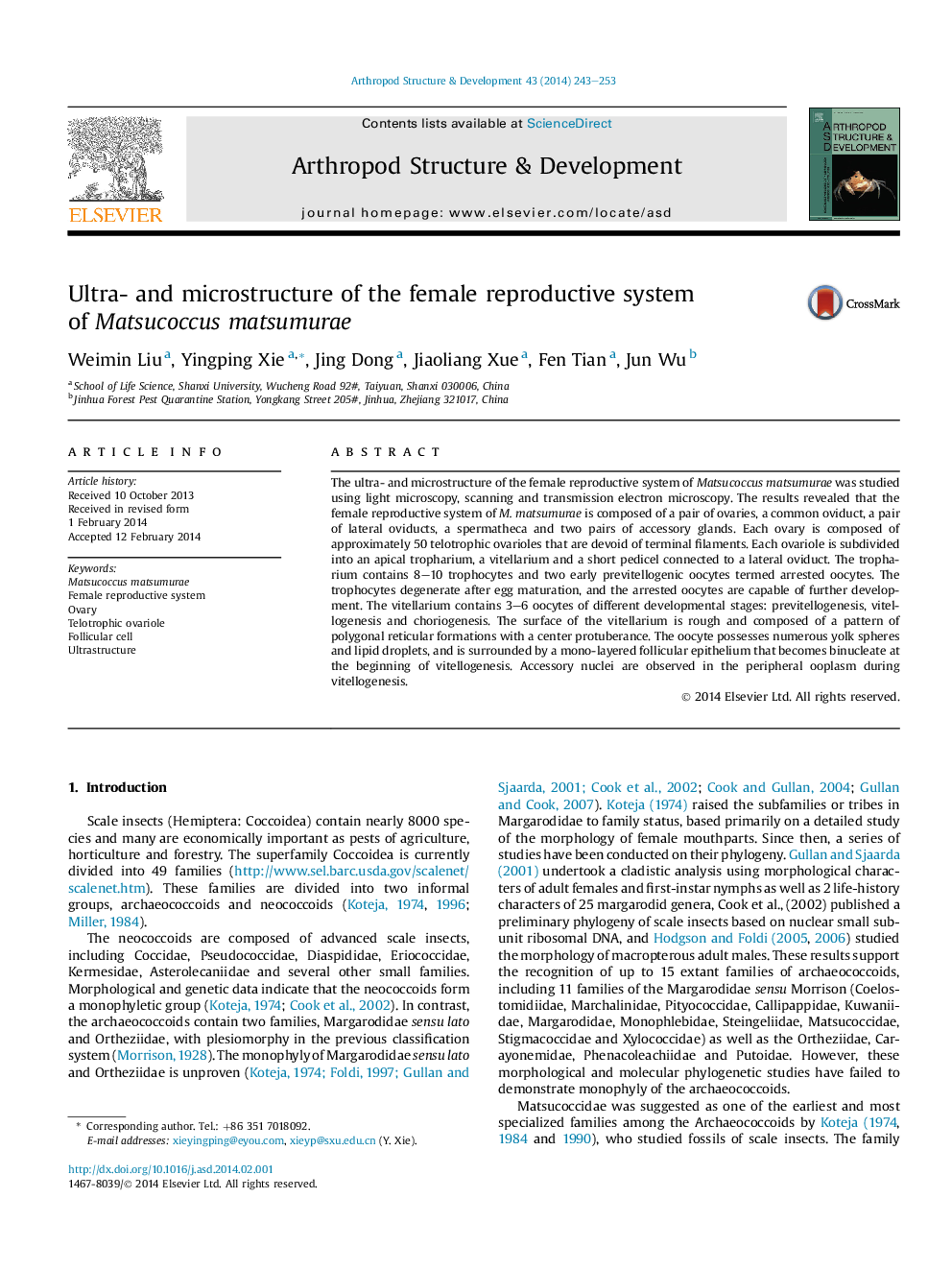| Article ID | Journal | Published Year | Pages | File Type |
|---|---|---|---|---|
| 2778599 | Arthropod Structure & Development | 2014 | 11 Pages |
•Ovary of Matsucoccus matsumurae is made up of about 50 ovarioles of telotrophic type.•Each ovariole is subdivided into a tropharium, a vitellarium and a short pedicel.•Tropharium contains 8–10 trophocytes and 2 arrested oocytes that can develop.•Vitellarium contains 3–6 oocytes of consecutive developmental stages.•Binucleated follicle cells and accessory nuclei were found during vitellogenesis.
The ultra- and microstructure of the female reproductive system of Matsucoccus matsumurae was studied using light microscopy, scanning and transmission electron microscopy. The results revealed that the female reproductive system of M. matsumurae is composed of a pair of ovaries, a common oviduct, a pair of lateral oviducts, a spermatheca and two pairs of accessory glands. Each ovary is composed of approximately 50 telotrophic ovarioles that are devoid of terminal filaments. Each ovariole is subdivided into an apical tropharium, a vitellarium and a short pedicel connected to a lateral oviduct. The tropharium contains 8–10 trophocytes and two early previtellogenic oocytes termed arrested oocytes. The trophocytes degenerate after egg maturation, and the arrested oocytes are capable of further development. The vitellarium contains 3–6 oocytes of different developmental stages: previtellogenesis, vitellogenesis and choriogenesis. The surface of the vitellarium is rough and composed of a pattern of polygonal reticular formations with a center protuberance. The oocyte possesses numerous yolk spheres and lipid droplets, and is surrounded by a mono-layered follicular epithelium that becomes binucleate at the beginning of vitellogenesis. Accessory nuclei are observed in the peripheral ooplasm during vitellogenesis.
